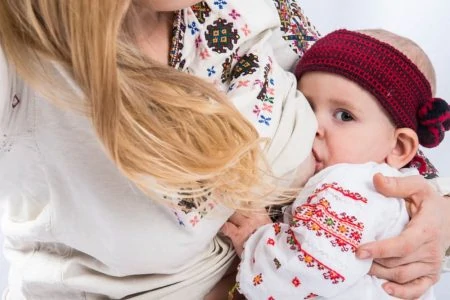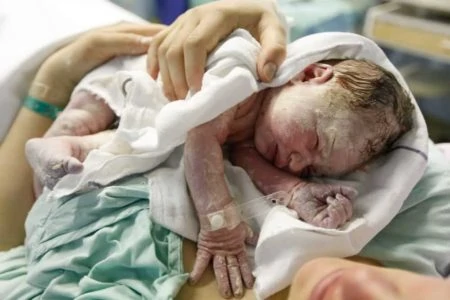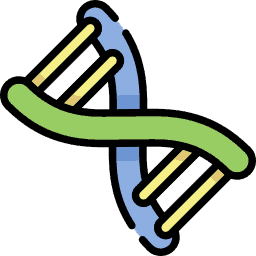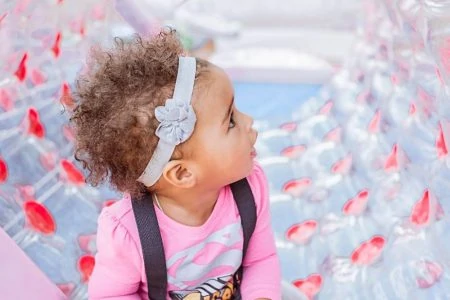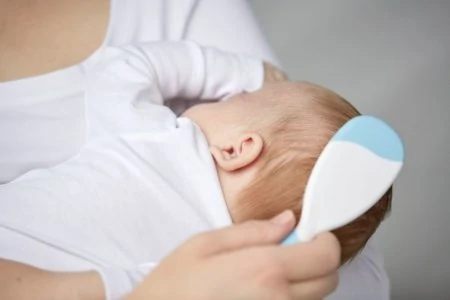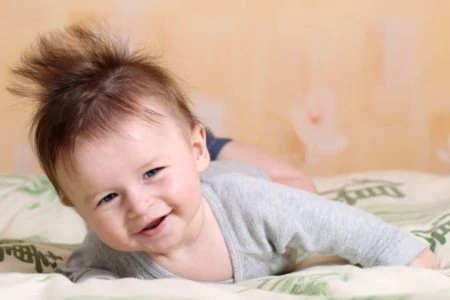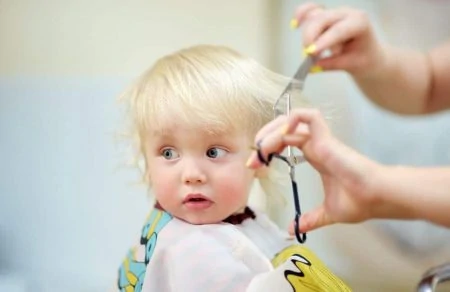Finding loose strands of precious baby hair on the crib sheet can be startling. Your little one might have been born with a full head of thick hair, but that doesn’t guarantee it will stay that way.
Infant hair loss is surprisingly common and happens to almost all babies at some stage. While it looks alarming, it does not mean your child will be bald forever.
We’re here to explain why those locks are falling out, how to identify the cause, and what you can do to support healthy regrowth.
Key Takeaways
- Hormonal shifts are key: Most infant hair loss happens in the first six months due to a natural drop in pregnancy hormones.
- Watch for friction: Bald spots on the back of the head often result from babies spending too much time lying in one position.
- Medical causes exist: Issues like cradle cap, ringworm, or alopecia areata can cause hair loss and may require a pediatrician’s help.
- Prevention is possible: frequent tummy time and gentle scalp care promote circulation and reduce pressure on the follicles.
Why Is My Baby Losing Hair?
Those first few months are a whirlwind of changes. Your baby grows every day, and their hair is no exception.
Baby hair loss usually peaks within the first six months. Some infants shed just a few strands, while others develop large bald patches. Try not to panic; those locks almost always grow back.
Hair growth happens in two distinct phases:
- Growing phase: The hair is actively lengthening. This can last around three years.
- Resting phase: Also known as telogen effluvium. The hair stays in the follicle but stops growing. This usually lasts about three months.
When the new hair begins to grow, it pushes the old hair out. This results in shedding.
While adults lose a few strands daily, babies often experience a massive shift where lots of hair enters the resting phase simultaneously (1). Let’s dig into the specific reasons this happens.
1. Hormone Levels (Telogen Effluvium)
Many moms enjoy thick, lustrous hair during pregnancy, only to experience heavy shedding postpartum. The exact same process happens to your baby.
During pregnancy, your baby absorbs your high hormone levels. After birth, those hormone levels drop rapidly. This sudden shift causes hair growth to stop abruptly, pushing follicles into the resting phase.
Once the new growth cycle begins, the old hair falls out. This usually starts occurring after the first month. Unfortunately, you cannot prevent this hormonal shedding, but it is temporary.
2. Friction Alopecia
If your baby has a specific bald patch on the back or side of their head, friction is the likely culprit.
Because newborns spend so much time on their backs to sleep safely, the constant rubbing against mattresses and car seats rubs the hair away. This is often called “friction alopecia.”
As your baby gets stronger, they may also begin pulling their own hair. This self-soothing habit usually happens when they are tired or nursing. They might tug or twirl small sections, which pulls hair out by the root.
3. Cradle Cap
If you see thick, yellowish, crusty scales on your baby’s scalp, you are dealing with cradle cap (seborrheic dermatitis).
Cradle cap is caused by overactive oil glands. The scales can be flaky and dry. As these scales flake off, they often take clumps of hair with them.
Most cases of cradle cap resolve on their own within six months to a year. However, you can speed up the process.
You can use specialized cradle cap shampoos to loosen the flakes. Alternatively, massage a little coconut oil or petroleum jelly onto the scalp before a bath to soften the crust.
Important: Never pick at the scales. Picking can cause infection, inflammation, and bleeding (2).
4. Ringworm (Fungal Infection)
Sometimes a fungus is to blame. Ringworm (tinea capitis) is a contagious fungal infection that can cause hair loss.
You might notice round, red, scaly patches on the scalp. The hair in these spots may break off at the surface, leaving black dots. Ringworm is not dangerous, but it is very contagious and requires treatment (3).
5. Alopecia Areata
In rare cases, the immune system attacks the hair follicles. This condition, known as alopecia areata, results in totally smooth, round bald spots.
While it is more common in older children, it can affect babies. If you see perfectly smooth bald patches without redness or scaling, consult your pediatrician. In many cases, the hair grows back within a year without treatment (4).
When to Call the Doctor
Most infant hair loss is cosmetic and temporary. However, certain symptoms warrant a trip to the pediatrician to rule out nutritional deficiencies or thyroid issues.
Contact your doctor if the hair loss is accompanied by these signs:
- Red, flaky, or oozing scales in the bald spots.
- Extreme lethargy or sluggishness.
- Swelling around the face or eyes.
- Cool, pale skin or sensitivity to cold.
Medical Treatments
If your baby’s hair loss is caused by a medical condition rather than hormones or friction, your doctor can help.
Fungal Infections:
If ringworm is the cause, your pediatrician will likely prescribe an oral antifungal medication. Creams usually do not penetrate the hair follicle deeply enough to clear the infection on the scalp.
Eczema:
Eczema can leave the scalp red, itchy, and dry. The scratching and inflammation can lead to hair thinning. Doctors often recommend emollient creams, ointments, or specific medicated shampoos to reduce inflammation and restore moisture (5).
Preventing Bald Spots
While you can’t stop hormonal shedding, you can absolutely reduce friction alopecia. These bald spots usually appear where the head presses against the crib mattress or car seat.
1. Alternate Sleeping Positions
Does your baby always look to the left when lying down? This preference can create a flat, bald spot on that side.
Try placing your baby at the opposite end of the crib every other night. Babies naturally turn their heads toward the door or a light source. By flipping their orientation in the crib, you encourage them to turn their head the other way, balancing the pressure.
You can apply this to car rides, too. If possible, move the car seat to the other side of the vehicle to encourage them to look out a different window.
2. Prioritize Tummy Time
Tummy time is the single best way to prevent the back of the head from flattening and balding.
Start practicing tummy time as soon as you bring your baby home. It relieves pressure on the back of the scalp and strengthens the neck, shoulder, and arm muscles. These muscles are vital for future milestones like rolling, crawling, and sitting.
Safety Note: Only practice tummy time when your baby is awake and you are supervising them. Never let a baby sleep on their stomach (6).
Hair and Scalp Care Tips
Treating your baby’s scalp gently can minimize breakage and keep the remaining hair healthy.
If you have a baby girl, resist the urge to use clips, bows, or tight headbands. Traction from tight ponytails can damage fragile infant follicles. Let the hair be free and loose as much as possible.
Washing and Brushing
You do not need to wash your baby’s hair every day. Over-washing can strip natural oils.
When you do wash their hair, use a tear-free, mild baby shampoo. Don’t scrub vigorously. Instead, gently massage the scalp with your fingertips and rinse water from front to back.
If the hair is tangled, use a wide-tooth comb or a soft-bristle baby brush. Avoid adult brushes, which can be too rough for a tender scalp.
DIY Moisture Treatment
If your baby has dry skin or curls that tangle easily, extra moisture helps. I personally love using a tiny bit of coconut oil. It is natural, smells great, and moisturizes from root to tip.
For a homemade leave-in conditioner to help detangle thick hair or curls, try this recipe:
- 1 ounce coconut oil
- 2 ounces aloe vera gel
- 1 teaspoon avocado oil
- 1/3 cup distilled water
Mix these ingredients in a spray bottle and shake well before every use. Mist it onto damp hair to help with combing. Avocado oil is rich in amino acids and proteins that support follicle health (7).
Fun Fact
Texture and Color Changes
Genetics are funny. You might be shocked when your dark-haired newborn’s hair falls out and grows back platinum blonde.
It is completely normal for hair color and texture to change drastically during the first year. A baby born with straight hair might end up with ringlets, or vice versa. These changes occur as the infant hair is replaced by more permanent “terminal” hair (8).
Baby Hair Loss FAQs
The Last Strand
Spotting hair loss on your bundle of joy is stressful, but try to breathe easy. It is almost always a normal part of their development. Whether it’s hormonal shedding or a bald spot from their favorite sleeping position, it is rarely a sign of a serious health issue.
Keep an eye out for redness, scales, or other changes in behavior, and call your pediatrician if you feel worried. Otherwise, enjoy those different looks. You might even want to save a lock of that first baby hair for the memory book before it changes forever.
